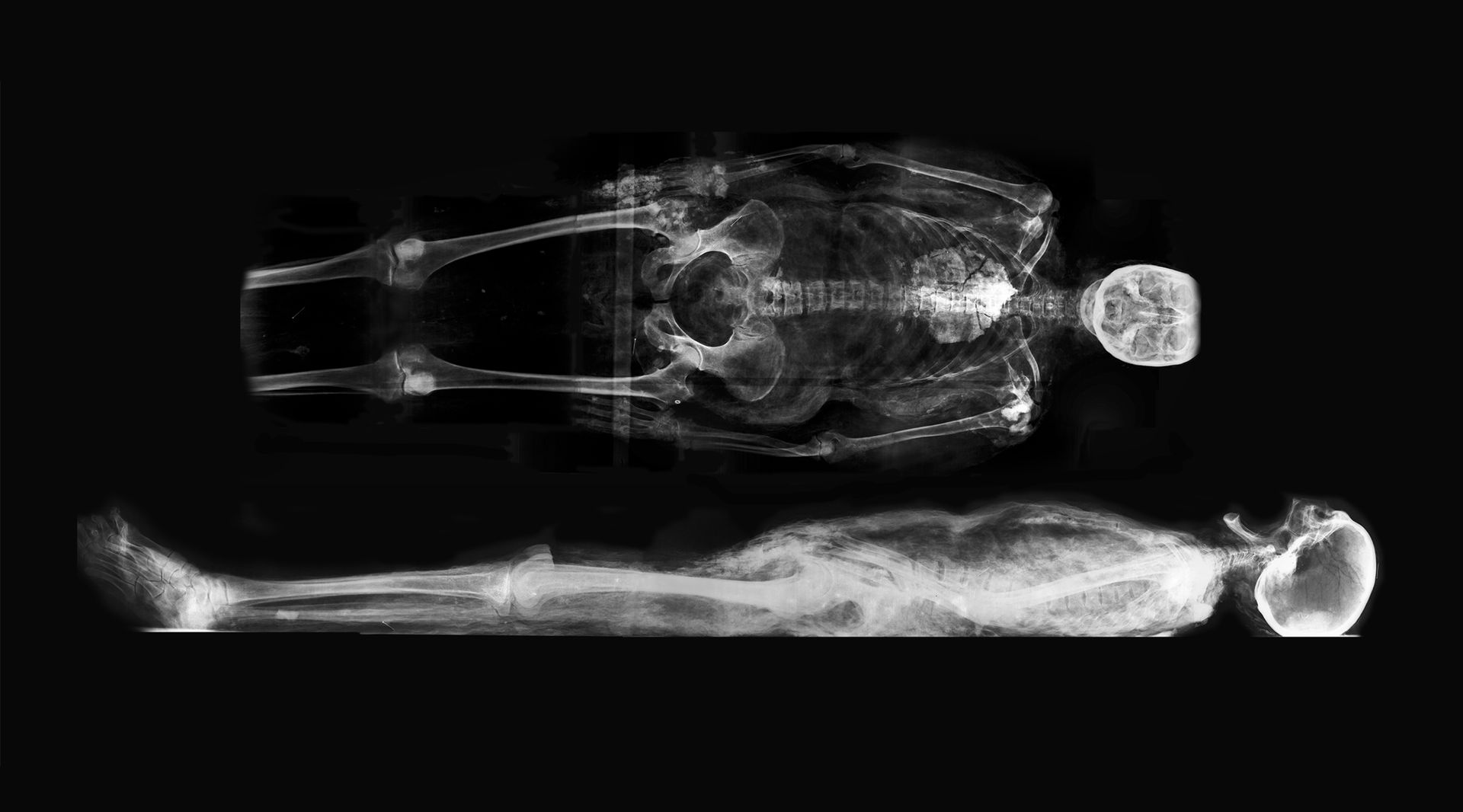The Soap Lady is the name given to a woman whose body was exhumed in Philadelphia in 1875. The specimen is unique because a fatty substance called adipocere encases the remains. Adipocere formation is not common, but it may form in alkaline, warm, airless environments, such as the one in which the Soap Lady was buried.
Dr. Joseph Leidy, known as the father of American vertebrate paleontology, procured the body of the Soap Lady after she was exhumed at a Philadelphia cemetery. He originally reported that she died in the Philadelphia yellow fever epidemic of the 1790s. Based on her lack of teeth, Leidy assumed that she had died in middle or old age.
The first X-rays taken of the Soap Lady in 1987 revealed buttons and pins on her clothing that that were not manufactured in the United States until the 1830s. Leidy was wrong about her year of death.
A radiology team from Quinnipiac University led by Jerry Conlogue and Ron Beckett made a new set of digital and print X-rays in 2007. These images have allowed us to revise the Soap Lady’s age at death from about 40 to significantly younger, perhaps in her late 20s.
